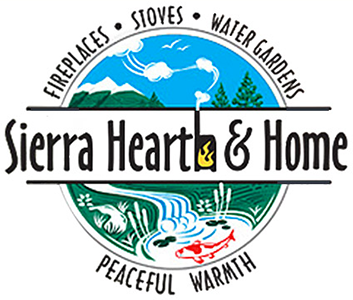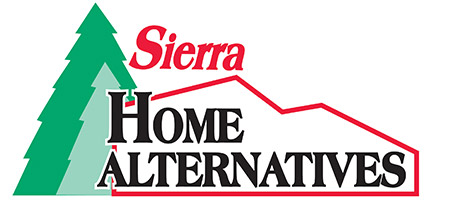In this article we’re going to discuss typical questions that come up regarding burning wood. Specifically, let’s talk about the efficiency of wood burning equipment, routine maintenance that’s necessary, safety concerns for you and your loved ones, sustainability and fuel costs.
If you’re thinking about adding a wood-burning fireplace, stove or fireplace insert to your home, this should be helpful and informative when making decisions to keep your family safe and warm. We guarantee you’ll feel much better and get improved performance from your equipment when you keep these important points in mind.
EFFICIENCY
Although efforts have been made to take them out of operation, there are still thousands of outdated, highly inefficient wood burners being used across the USA and Canada. In years past, there was little if any regulation on the efficiency of wood burning equipment. That’s changed and manufacturers have met the challenges of the most recent requirements from the Environmental Protection Agency (EPA).
The first performance standards for smoke emissions by the EPA were established in 1988. Upgraded 24 years later, the latest mandatory smoke emission requirements state that stove, fireplaces and inserts be at 2.0 grams per hour or less. Manufacturers achieve this through one of two ways; catalytic or non-catalytic technology. Operated properly, very little smoke will be produced by this equipment. What that means to you is that any appliance certified by the EPA today is extremely “efficient”.
MAINTENANCE
Consistent, regular maintenance with wood burning equipment is critical. All in your home will rest easier at night knowing that your chimney has been professionally inspected and cleaned as necessary. Catalytic combustor and/or secondary burn chambers must be examined a couple times each year and cleaned. All door and glass gasketing should be regularly checked and replaced as needed. Ashes must be cleaned out and properly disposed of. Temperature gauges and probes should be looked at periodically for corrosion so their readings will be accurate. None of these are particularly time consuming, but all are vitally important.
SAFETY
Safety and maintenance go hand in hand. In addition to professionally cleaning the chimney, at the top of the list under “safety” is the condition of the fuel that’s being burned. Burning wood that has not been dried long enough will lead to creosote building up in the chimney. Accumulation of creosote can lead to chimney fires.
Make it a family affair and try to get a year ahead with your wood supply. Have the kids help cut, split, stack and cover the wood. Do it now for use next year. Wood that’s split, dries much better than wood that’s not. Use a moisture meter to ensure the wood has adequately lost its moisture content. Aim for moisture content less than 25%. Dry wood burns best and with today’s highly efficient equipment, you’ll see little if any smoke coming out of the chimney if your wood is in the 20% moisture range!
If you’re installing new equipment, make absolutely sure that all clearance requirements have been met or exceeded. This includes the clearances for the sides, back and front of the equipment, hearth requirements and mantle clearances. Wood trim or moldings, curtains, paper, kindling, toys, carpeting and furniture are all considered “combustible” and need to be kept a minimum of 24” – 36” away from the sides and front of the equipment.
Never over-fire a wood-burning appliance. Read the owner’s manual and understand it. Rely on a temperature gauge to maintain safe temperature and long burn times. Use a metal ash bucket with a sealed lid when cleaning out ashes. Hearth gloves or welders’ gloves are invaluable when adding wood to the fire.
SUSTAINABILITY
It’s a great feeling knowing that when you curl up with a good book or a fun board game in front of the fire, you’re being environmentally friendly, too. Regardless of the species, wood is a sustainable and renewable resource that is in abundant supply and is often free or inexpensive to obtain. When compared to fossil fuels, wood is less taxing on Mother Nature. Studies have shown that when wood is burned correctly, a wood fire is one of the most environmentally sound and efficient ways to heat a home. When properly burned, it leaves no net carbon emissions which are believed to contribute to the greenhouse effect.
The bottom line with today’s EPA certified wood burning fireplaces, stoves and inserts: you’ll get more heat from less wood and put a miniscule amount of smoke into the air.
FUEL COSTS
How would you like to set aside some money for that special family vacation you’ve been thinking about? Fun in the sun, or that water park or maybe that camping and fishing adventure? If you’re heating with gas, oil or electricity, you will save considerable money if your home is equipped with a wood-burning stove or fireplace. Just imagine: greatly reducing or eliminating your heating bills each month! Start putting that money in your new vacation fund!
There are millions of homes in the USA and Canada that are using wood as a primary or secondary heat source. Your family is going to love that amazing radiant heat from your wood burner. Heating with wood is a much cheaper and more effective way to make your home cozier and more comfortable.
Equipment failures, accidents and nasty storms can lead to power outages. And without power, forced air furnaces and boilers are not going to operate. Since wood-burning stoves and fireplaces are not dependent on electricity, you’ll experience peace of mind and comfort from heating with wood. Your family is safe and secure, even during an extended power outage.
In summary, if you’re adding or replacing a wood-burning stove, fireplace or insert remember to:
- Spend your money on EPA certified equipment.
- Understand there is maintenance that’s not optional, but required.
- Have top-of-mind awareness for all safety practices.
- Feel good about utilizing an environmentally friendly fuel source.
- Start planning your next family excursion because you’re going to save money!











